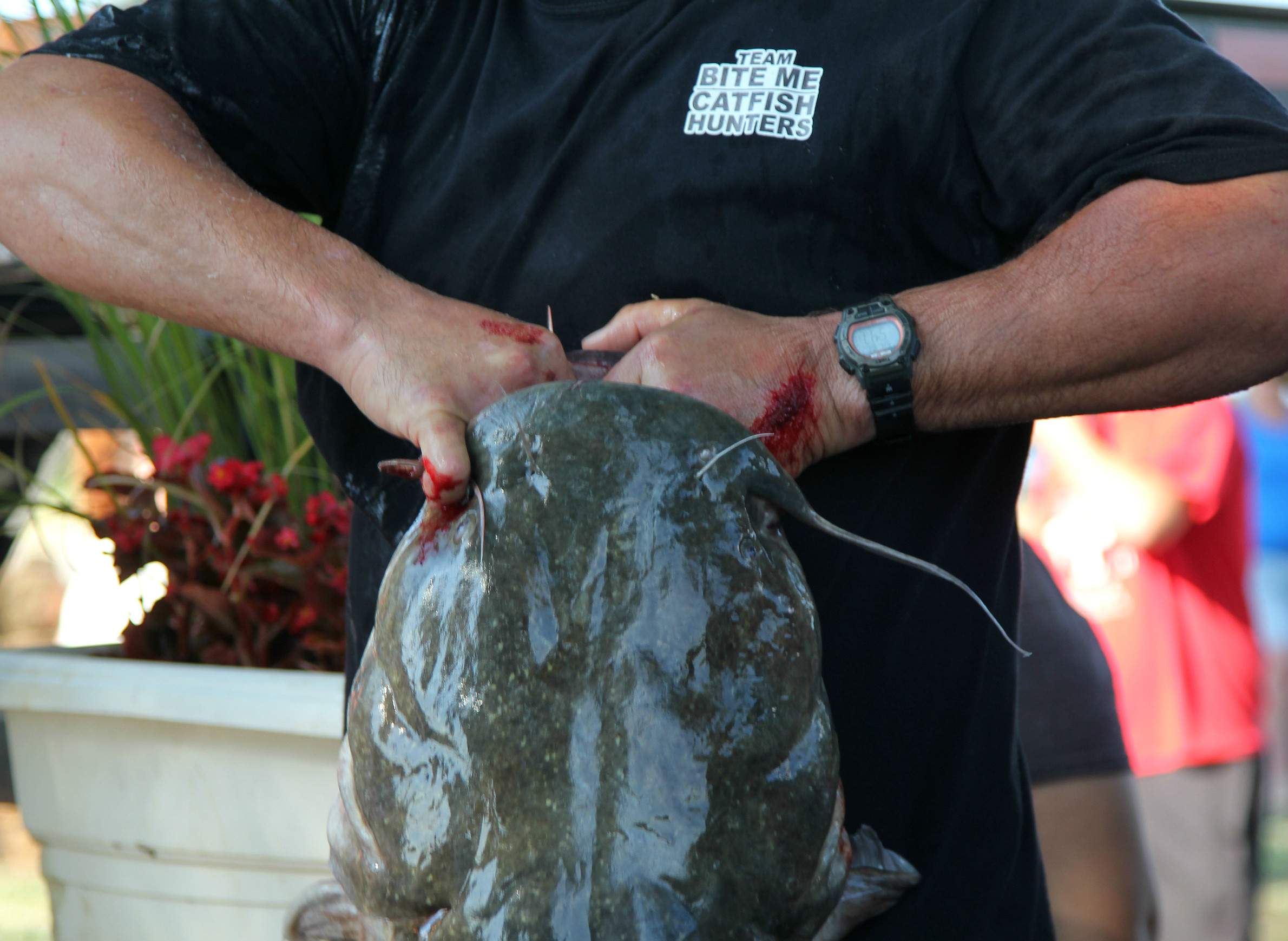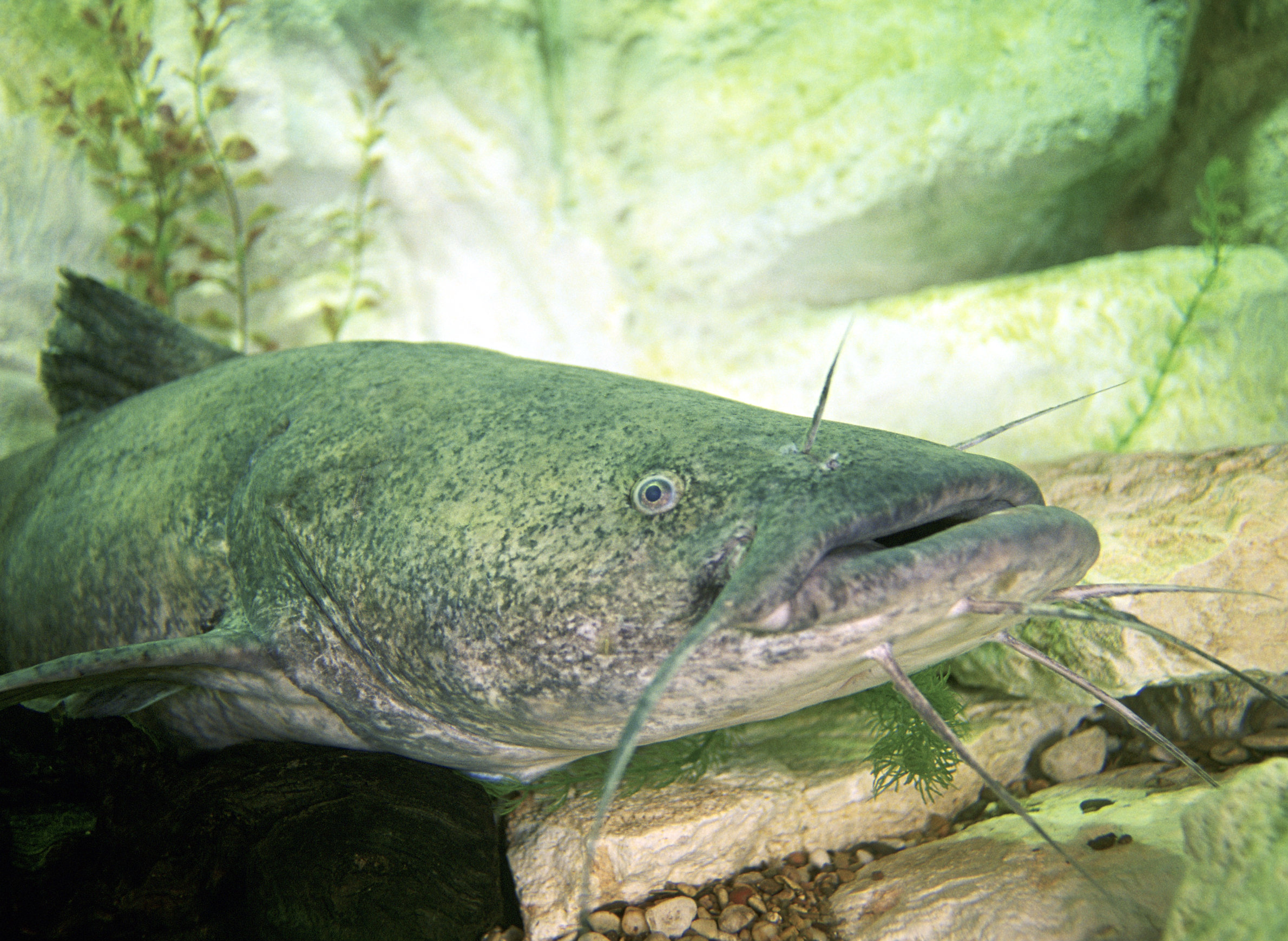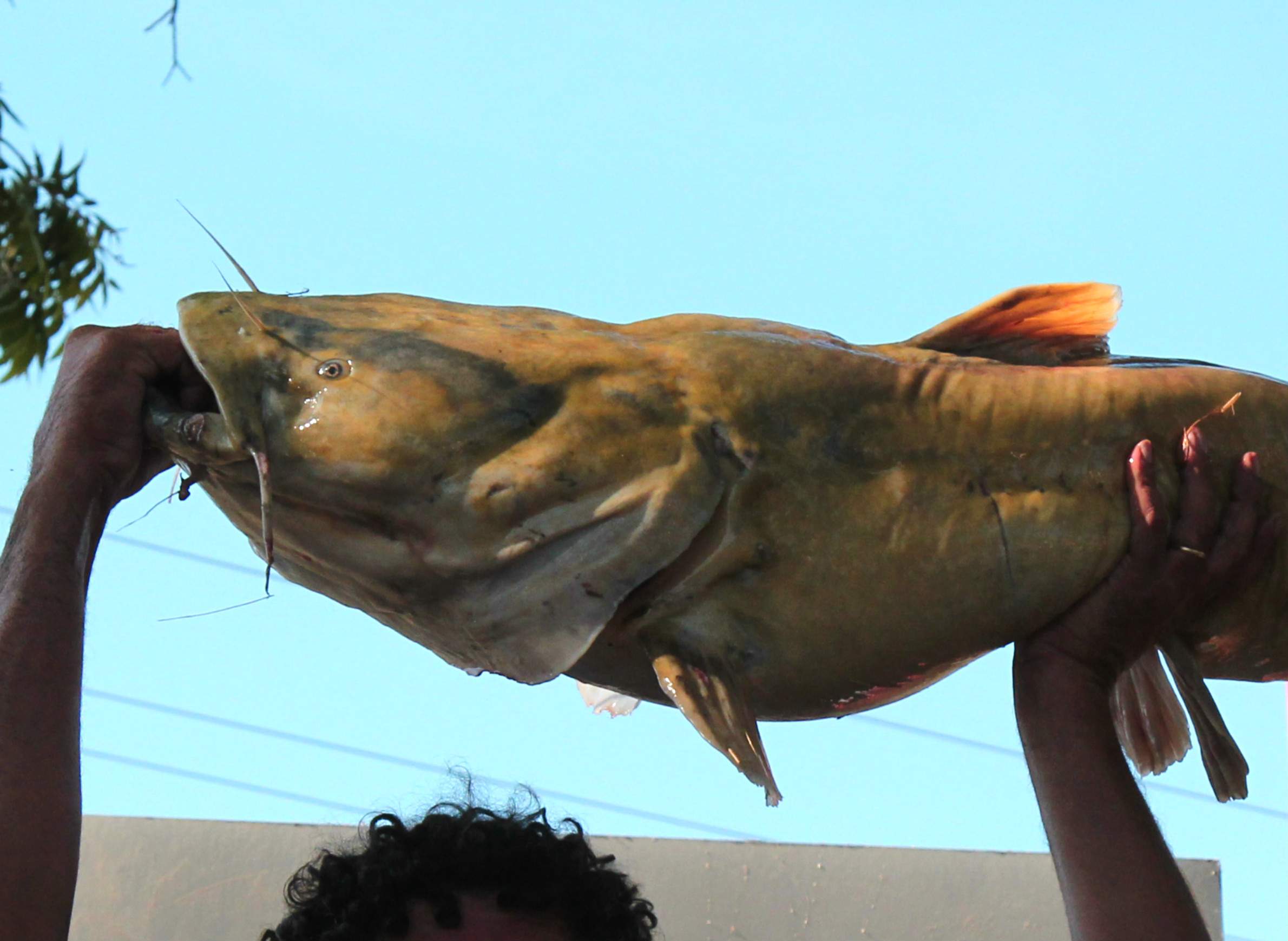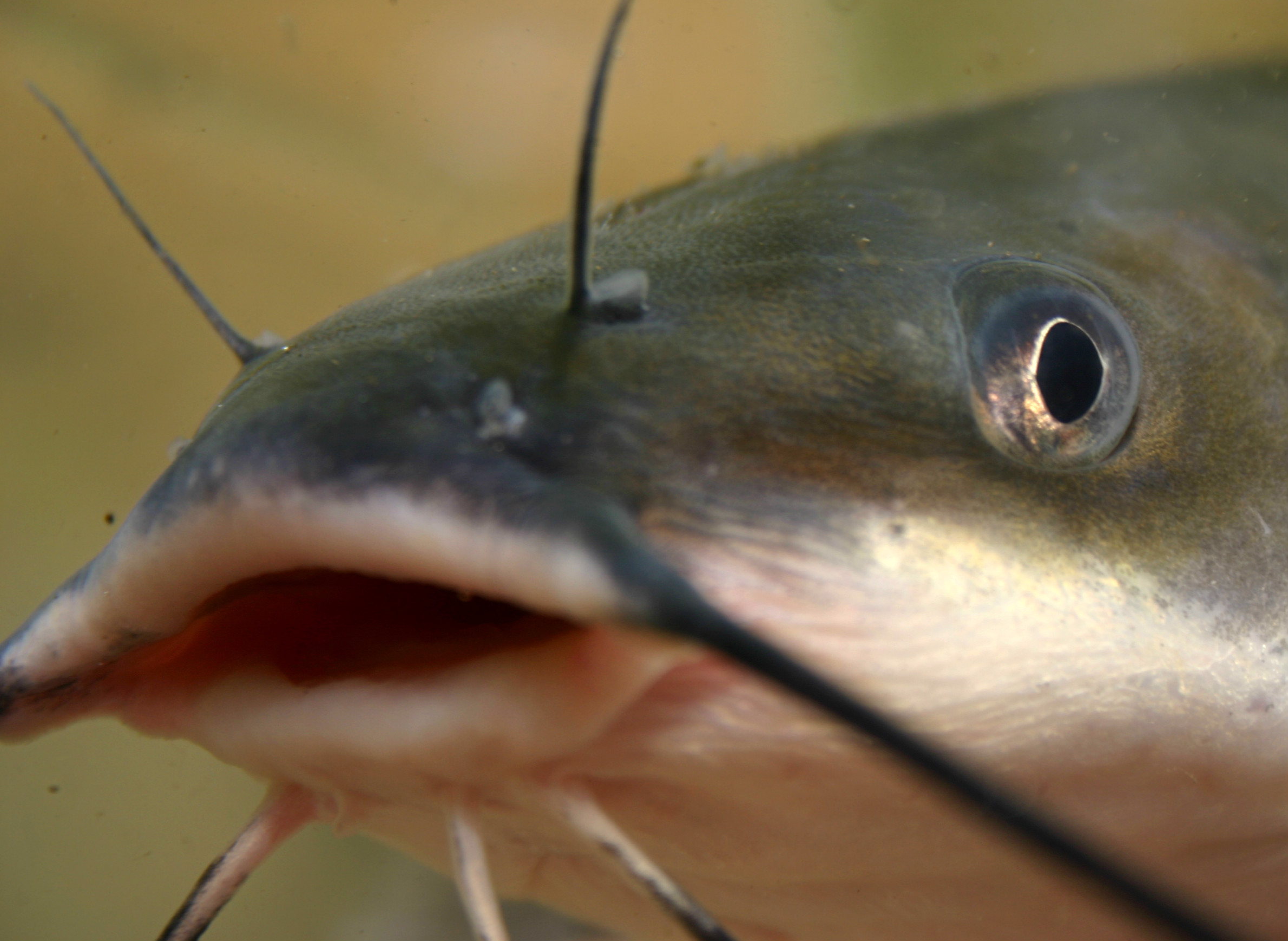
Catfish Noodling Gets A Hand In Wisconsin

A daring practice in which people catch catfish by hand is finding official support in Wisconsin. This method of fishing is called noodling, and it has spawned something of a subculture well-represented in parts of the Southern and Midwestern United States, as well as on YouTube.
A proposal (AB 913 and SB 766) taken up by the Wisconsin Legislature would explicitly allow people to pursue catfish and what are known as "rough fish" with their bare hands, as well as with a bow and arrow or crossbow.
Wisconsin's current wildlife regulations generally require anyone catching fish to do so with a hook and line, not including special spearing seasons and some provisions allowing the use of nets. Rules are a bit looser for rough fish, which in state law include, according to a 2016 guide from the Wisconsin Department of Natural Resources, "suckers, common carp, Asian carp (silver, bighead, black and grass), goldfish, redhorse, freshwater drum, burbot, bowfin, gar, buffalo, lamprey, alewife, gizzard shad, smelt, mooneye, and carpsuckers." A DNR guide to eating rough fish, published in 1977, notes that often these species have a bad reputation among anglers and conservationists (some are, in fact, invasive), but defends their value as table fare.
Rep. Treig Pronschinske, R-Mondovi, filed the noodling bill in the Assembly, and issued a statement promoting the legislation.
"As fishing for trophy catfish continues to grow in popularity in Wisconsin, it is important to update state law to reflect the common ways in which they are captured," he said. The statement also touted Wisconsin's shoreline along the Mississippi River as "prime catfish water."
Under the proposal, the DNR would still regulate the weight and/or number of fish people catch by noodling, but not forbid the practice itself.
But what's the story behind noodling? For those with burning questions about hauling big cats out of their holes, here are a few answers.
What is noodling?
Noodlers coax catfish out of their hiding places by wiggling their fingers underwater — creating a visual effect that supposedly makes the digits looks like noodles, hence the name for the practice. (A 2006 New York Times feature goes in-depth into this fishing art, and notes that the practice is also sometimes called "hogging, dogging, tickling, grappling and grabbling.") The noodler's hand serves as the bait: A catfish, curious or threatened, is enticed to bite the hand, at which point a noodler tries to wrestle the fish out of the water, often using the fish's gills as an extra gripping point.
People have been catching fish with all manner of tools — rods, spears, nets, traps and other methods, including by hand — for millennia. The culture of noodling specifically focuses on catfish because of the spawning habits of multiple species. When it's time for a female catfish to lay eggs in the spring or summer, a male catfish will clear out a nest, usually in the form of a cavity along the shoreline. The female lays its eggs there and the male sticks around to guard them.
Catfish can be found in a variety of specific locations; videos on YouTube show noodlers going into a half-submerged length of concrete pipe, muddy indentations in riverbanks, and under rocks and brush piles at the water's edge. Because they're big creatures and are generally at the top of the food chain in their habitats, catfish encountering an intrusive human hand are less likely than most other fish to flee and more apt to stick around and fight.
Who are noodlers?
Noodling's strongest cultural associations in the U.S. are with rural areas around the South and Midwest. Mary Grigsby, a professor emeritus of rural sociology at the University of Missouri, wrote what may be the only academic deep dive into this past-time, the 2012 book Noodlers In Missouri: Fishing For Identity In A Rural Subculture.
Noodling is prohibited in Missouri, but when Grigsby was first researching the practice in 2005, the state was embarking upon a short-lived experiment with officially sanctioned noodle seasons. She believes the portrayals of noodling on YouTube and on the short-lived Animal Planet reality show Hillbilly Handfishin' miss the cultural nuances of noodling's place in rural communities. What little scholarly mentions she could find before writing her book, Grigsby said, "portrayed it as a hyper-masculine activity of people who were sort of near crazy. When I went to the opening day for the legal season in Missouri, what I noticed was so different to the stereotypes."
Grigsby spent some time talking (and yes, noodling, though she said she probably wouldn't do it again) with about 20 men and 10 women who catch catfish by hand. They were all white, rural Missourians, though she has heard of noodlers who are African-American. What Grigsby found was that a devotion to noodling has been passed down in some families for generations, and serves social functions that go beyond the mere thrill of hauling up a big catfish.
"Once I got in the river with the noodlers and spent the afternoon with them, I realized culturally it's a very interesting practice, in the sense that what I observed was men and women working together to noodle, men teaching children as they went along the river," Grigsby said. "And what they were teaching was not just how to fish, but how to interact with other people in the group."
Anyone who eats fish knows that catfish are excellent as part of a meal, and the noodlers Grigsby spoke with tended to share the river-monster bounty, sometimes freezing catfish fillets and distributing them to elderly community members, or serving up the catch in communal fish-fry gatherings. Actually touching the fish whose life they're taking — often getting bitten and bleeding in the process — noodlers seek a deeper connection with and appreciation of nature and their food sources.
"Even the people who don't noodle participate in the culture and the values of the culture," Grigsby said. "Esteem is given to those who noodle in the community."
In states like Missouri where noodling is illegal, noodlers have a hard time accepting the idea that what they do is poaching, because, it's crucial to their sense of self and community, said Grigsby. She recalled one noodler saying that if he wanted to have a fun outing with his family, he didn't want to go to, say, an air-conditioned mall — he'd rather spend time in a river.
"It is a practice that enables them to enact values of being close-knit, self-sufficient," Grigsby said. "For the men, they emphasize toughness, tenacity. There's a lot of talk about anti-consumerist frugality."
Why do some states forbid noodling?
Regulators who've cracked down on noodling in other states cite its dangers to both catfish and humans. Pulling a catfish away from a nest where it's guarding eggs disrupts the spawning process. Missouri officials cite the potential threat to the catfish population in banning the practice in that state. It's not clear that noodling is practiced on a big enough scale anywhere to really disrupt the catfish population as a whole, but if conventional anglers think that noodlers are hogging all the prize fish, that can create tensions.
A sport that relies on sticking one's hand into a dark hole and seeing what happens is dangerous for obvious reasons. Getting bitten by a catfish can lead to injury or infection, and there's always the danger of getting bitten by something else.
"You could stick your hand in a hole and find a snapping turtle or a muskrat instead of a fish," said Joel Ballweg, a fishing guide based in Mazomanie.
In other states, that same danger may extend to alligators and poisonous snakes. Most noodling by nature happens in fairly shallow water, but there's also the risk of drowning if a noodler's hand gets stuck in a crevice, or if they underestimate the strength of a fish.
Catfish can also sting their attackers with bony spines in their pectoral or dorsal fins.
Statistics on noodling-related injuries and deaths eluded WisContext, but media outlets have reported noodlers being drowned, being swept over dams, and catching venomous snakebites.
How do Wisconsin's neighboring states treat noodling?
Noodling is legal in Illinois, but not in Iowa, Michigan or Minnesota.
Joe Larscheid, chief of fisheries for the Iowa Department of Natural Resources, said his state's rationale for prohibiting noodling comes down less to the biological threat and more to a growing interest in conventional angling for catfish.
"There's concerns from die-hard catfish anglers that noodlers can go in there and catch these big catfish," Larscheid said.
While getting caught by noodlers can stop the biggest and most prized male catfish from reproducing, Larscheid does not believe noodling in Iowa happens enough to interfere with spawning in any significant way. He hasn't heard of any noodling-related deaths or injuries in Iowa, though the state has fined people for taking catfish by hand.
Are catfish important in Wisconsin?
Catfish aren't as iconic to fishing culture in Wisconsin as much as muskies or walleye, but they're still common in the state's rivers, and it isn’t unheard of to catch a really big one.
Wisconsin is home to channel catfish (Ictalurus punctatus) and flathead catfish (Pylodictis olivarus) and to three species of bullhead catfish. The largest catfish species found in North America, blue catfish (Ictalurus furcatus), are prized in the southern U.S., but wildlife officials don't believe their range reaches quite up to Wisconsin.
Blue catfish and channel catfish are often confused for one another, which muddies the waters a bit as to their respective ranges, but the Wisconsin DNR maintains there are no blue catfish in the state.
State Sen. Tom Tiffany, R-Hazelhurst, a frequent opponent of environment-oriented regulations, supports legalizing noodling in Wisconsin. In a Feb. 16, 2018 newsletter to constituents, he wrote: "Although Wisconsin's catfish do not enjoy the widespread glamour and status as in the southern United States, they are becoming more popular with Wisconsin’s anglers, including those wishing to noodle."
The most prominent noodler in Wisconsin is apparently Speaker Paul Ryan, at least according to a New York Times profile published in 2012, the year he was the Republican vice-presidential candidate: "'They come up on your hand, and you just squeeze wherever you are in that fish and pull it out,' he said with a shrug, bragging about the 40-pounder he landed two seasons ago. 'I know it sounds a little crazy, but it's really exhilarating.'"
Editor's note: This item was updated with additional information about the regulation of noodling in Missouri.





